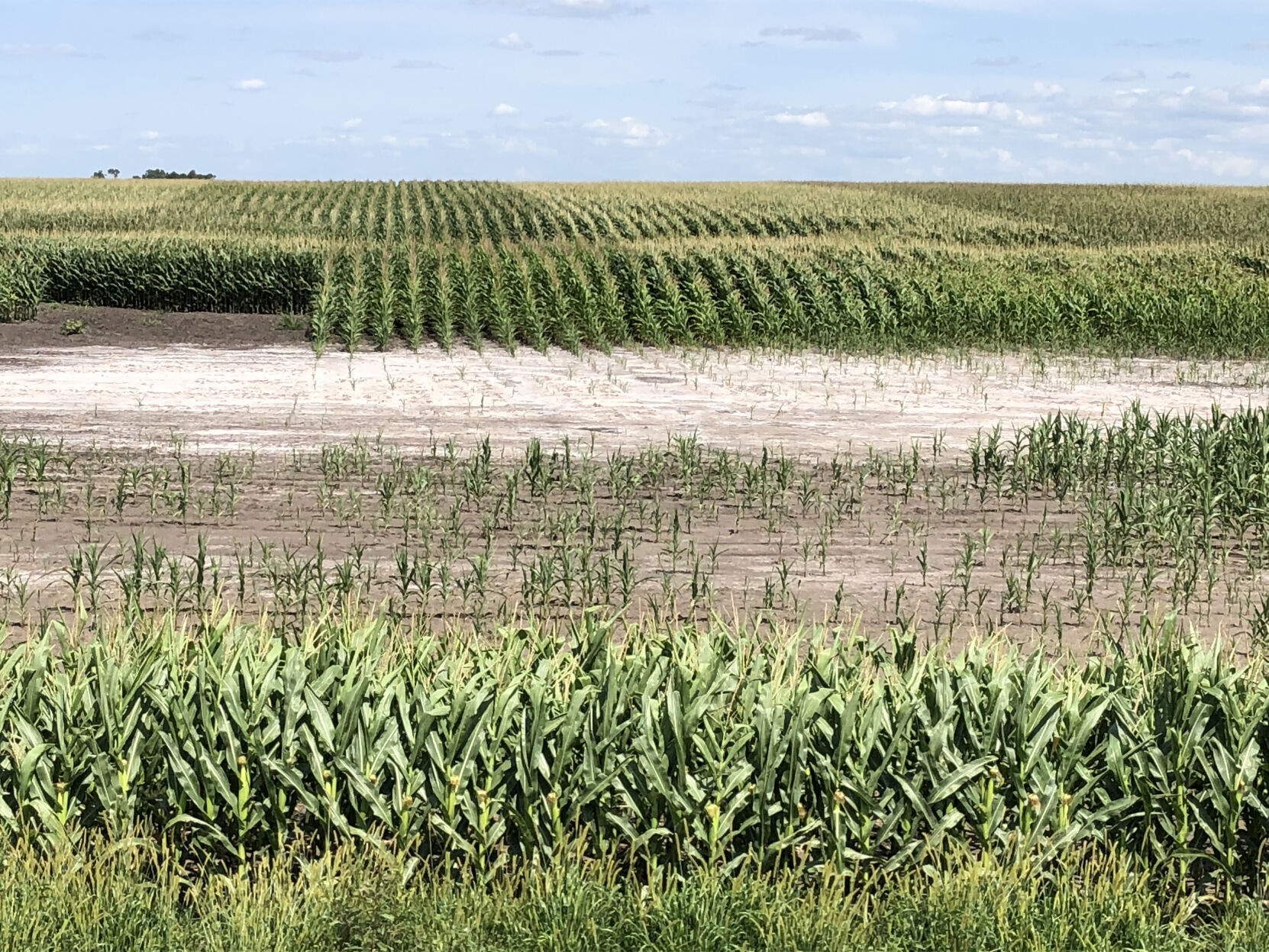Salinity areas. Trouble spots. White deserts. Regardless of what they’re called, saline soils are a problem for South Dakota. White, salty areas where nothing grows are a common sight in fields across the state.
“The amount of salinity that’s in South Dakota, it’s just amazing how much there is,” longtime Cronin Farms Agronomy Manager Dan Forgey said during a discussion panel at the 2023 Soil Health Conference.
Saline soils have excessive levels of soluble salts in the soil water high enough to negatively affect plant growth, resulting in reduced crop yields, increased input costs, and increased soil erosion. How to manage these areas is an important question because tilling them, applying fertilizer, and planting them not only results in a financial loss on those acres, but can also cause them to grow in size.
One way to deal with saline areas is to take them out of row crop production and plant deep-rooted, salt-tolerant crops to pull water and salts deeper into the soil profile.
“The first thing we’ll do is we’ll go on with the forage barley or barley and hay it,” Forgey said of his approach to saline areas at Cronin Farms near Gettysburg, South Dakota. “Take the forage barley off, come with the rye, and then I’ll put it into grass.”
“That’s how we handle it. We do not farm through it,” Forgey said. “Even if it’s a three- or four- or five-acre patch, we try to straighten it out.”
The approach is designed to make every acre profitable.
Cristin Weber, a precision agriculture and conservation specialist with Pheasants Forever, helps administer the Every Acre Counts program, which provides producers with a free precision profitability analysis.
“With the Every Acre Counts program, we’ve looked at about 52,000 acres,” Weber said. “And any time that I ran a profitability report on a field that has saline acres, and I can visually see the white—like when I look at aerial maps – I’ve never found one of those acres to be profitable.” She said that when producers plant row crops in those areas, “they’re literally just putting money down on those acres, and they’re not getting a return on their investment.”
The analysis provided by Every Acre Counts allows producers to see which areas of their fields are the most profitable and which areas need improvement. “We’re using yield data, variable rate maps, and then pairing that information with their input costs. And then once we merge that data, it gives the producer a report, a red-to-green map or visual—it looks like a yield map, but it’s actually their profit—and it’s showing what acres of the field are doing the best, but then also highlights what areas are at a net loss,” Weber said. “And so we’re able to edit those boundaries a little bit, take those marginal lands out, and give a what-if analysis. What could happen to your yields over time just by not farming that? How much expense could be reduced every year and how much profit could be increased just by not farming that, but then also enrolling those acres into a conservation program?”
Northville, South Dakota, producer Alex Boekelheide said during the 2023 Soil Health Conference that he started working with Every Acre Counts to pinpoint the troubled acres on his farm and find out exactly how much those acres are harming the bottom line.
“The strategy we’re starting to deploy is perennials. So, through that program—it’s a five-year program—we dormant-seeded some different grass species and alfalfa mixed in to have some diversity there. Our intent is to have the acres that are really in tough shape go into this program for five years and then re-evaluate after year five if we want to bring them back into production or not,” Boekelheide said. “It’s been remarkable. You finally feel good about those acres. You’re making a change before it’s a crisis.”
He said that he is “starting to see some cover and some growth and starting to see to some more activity on those soils instead of being just barren and white.”
Weber said that for landowners in the Prairie Pothole Region, the Soil Health and Habitat program offers a working lands conservation option that would allow producers to hay or graze acres taken out of production from August through April. That program also offers seeding cost-share funds and a land payment. She also said that she can help producers take the first steps with other conservation programs.
However, there are no conservation program requirements to participate in the Every Acre Counts program, and simply managing marginal acres differently can result in increased profitability. Weber said that in 2021 a producer working with the program removed 99.5 acres from corn production in a field and seeded them with an alfalfa or intermediate wheat grass mix. The total profit from corn on the field increased by more than $4,500 simply by removing the marginal acres from crop production—no conservation program payments were received.
“Sometimes you got to treat every acre different instead of farming it end-to-end like we’re all used to doing,” Boekelheide said.
The Every Acre Counts program is funded primarily by South Dakota State University Extension, Second Century Habitat Fund, Pheasants Forever, Natural Resources Conservation Service, South Dakota Game, Fish and Parks, South Dakota Corn and Purina.
More information about Every Acre Counts can be found at extension.sdstate.edu/agriculture/every-acre-counts. For more information about soil health management practices, visit www.sdsoilhealthcoalition.org.




